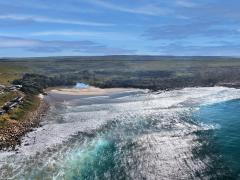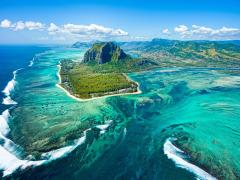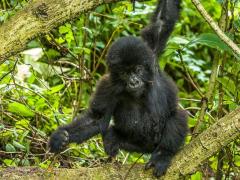Matusadona National Park, on the shores of Lake Kariba in Zimbabwe, is entering an exciting new phase of product development aiming to cement the park as a world-class example of low-density eco-tourism.
A co-management partnership established between African Parks and the Zimbabwe Parks and Wildlife Management Authority in 2019 has led to dramatic reductions in elephant poaching, secured functional wildlife corridors between protected areas and fostered responsible natural resource management by communities.
“Matusadona has experienced an impressive revival under African Parks with improved anti-poaching measures, ecosystem restoration and the reintroduction of key wildlife species. The park is now becoming well-known for its growing elephant herds, lion prides and other populations of large mammals,” said Matthys van Aswegen, Senior Travel Consultant at Discover Africa.
The park is aiming to reintroduce black rhino in 2026 – adding to recent introductions of wildlife such as eland, sable and buffalo.
“We have witnessed a dramatic increase in wildlife sightings along the shoreline of Matusadona and a sharp reduction in fish poaching activities since African Parks have been involved,” said Gavin Rennie, GM of Sales and Marketing at Zambezi Cruises & Safaris. “At least three of the Big Five are regularly seen on the shoreline with leopard sightings increasing too. With the introduction of black rhino, Matusadona is a world-class wild destination.”
The 107 000 hectare park is known for hosting an impressive diversity of habitat from the lake to open floodplain shorelines, thick valley floor vegetation and a 600 metre-high escarpment.
“Matusadona plays a starring role in a Zimbabwean itinerary, especially when combining Victoria Falls, the Zambezi River, Hwange National Park and Mana Pools. This circuit offers some of the best of off-the-beaten-track, uncrowded experiential travel,” said Rennie.
Keeping it wild
With the “overwhelming support” of local communities, revenue in Matusadona, generated largely through tourism, has grown by 1 300%, according to Matusadona National Park Manager Mike Pelham.
Pelham told Tourism Update that, while a number of eco-tourism and conservation developments are planned, the aim is to maintain Matusadona’s low-impact model.
“We know just how appealing this park is and how popular it has the potential to be but we want to keep it wild, putting conservation principals first. Behind all eco-tourism developments underway, within the park and the neighbouring community-owned wildlife areas, the defining principle of ‘conservation and communities first’ leads us,” he said.
The park’s future plans include enhancements to road networks and improved access by air and from the lake.
“Although romantically remote and accessed through some rather adventurous 4x4 roads, the landscape around the park is increasingly accessible through the many boat transfers or flights into the area. The park will be launching a ferry network on Lake Kariba, coupled with the introduction of daily scheduled flights from Harare and regular scheduled flights from Victoria Falls,” said Pelham.
Additional priorities include diversifying the park’s product mix beyond traditional game viewing to include guided walks, hikes, boating and fishing as well as marketing to Lake Kariba’s growing houseboat industry and developing community-led tourism opportunities.
Current accommodation within the park ranges from campsites to rustic bush camps and high-end lodges.
“The park will see a few more carefully selected wilderness sites fitted with platforms and simple ablutions but the impact of tourism will be kept in balance. We’ve got plans to support the development of community-owned conservation areas bordering the park into really special eco-tourism products,” said Pelham.
Van Aswegen said the intentional low-density model makes the park particularly attractive to experienced safari travellers looking for remote destinations.
“Matusadona’s mix of dramatic landscapes and exclusivity – plus the fact that it’s a conservation success story – makes it increasingly attractive to this niche market.”
Broader importance
Pelham stressed that, in light of over-tourism concerns in areas such as the Serengeti, parks such as Matusadona hold broader significance for the safari industry.
“There are so many fantastic wildlife destinations throughout Africa – each as special, necessary and irreplaceable as the last. We need to market these alternatives so that we spread the tourism load and do not overcrowd some parks to a point where there is a negative environmental impact because of tourism densities,” he said.
“The spin-off of shining the light on lesser-known wildlife areas is that we also spread the tourism dollar, and this means greater protection for more areas and greater benefits for a wider group of communities.”













